The pulley arrangements shown in figure are identical, the mass of the rope being negligible. In case I the mass m is lifted by attaching a mass 2m to the other end of rope with a constant downward force F=2mg, where g is acceleration due to gravity The acceleration of mass m in case I is
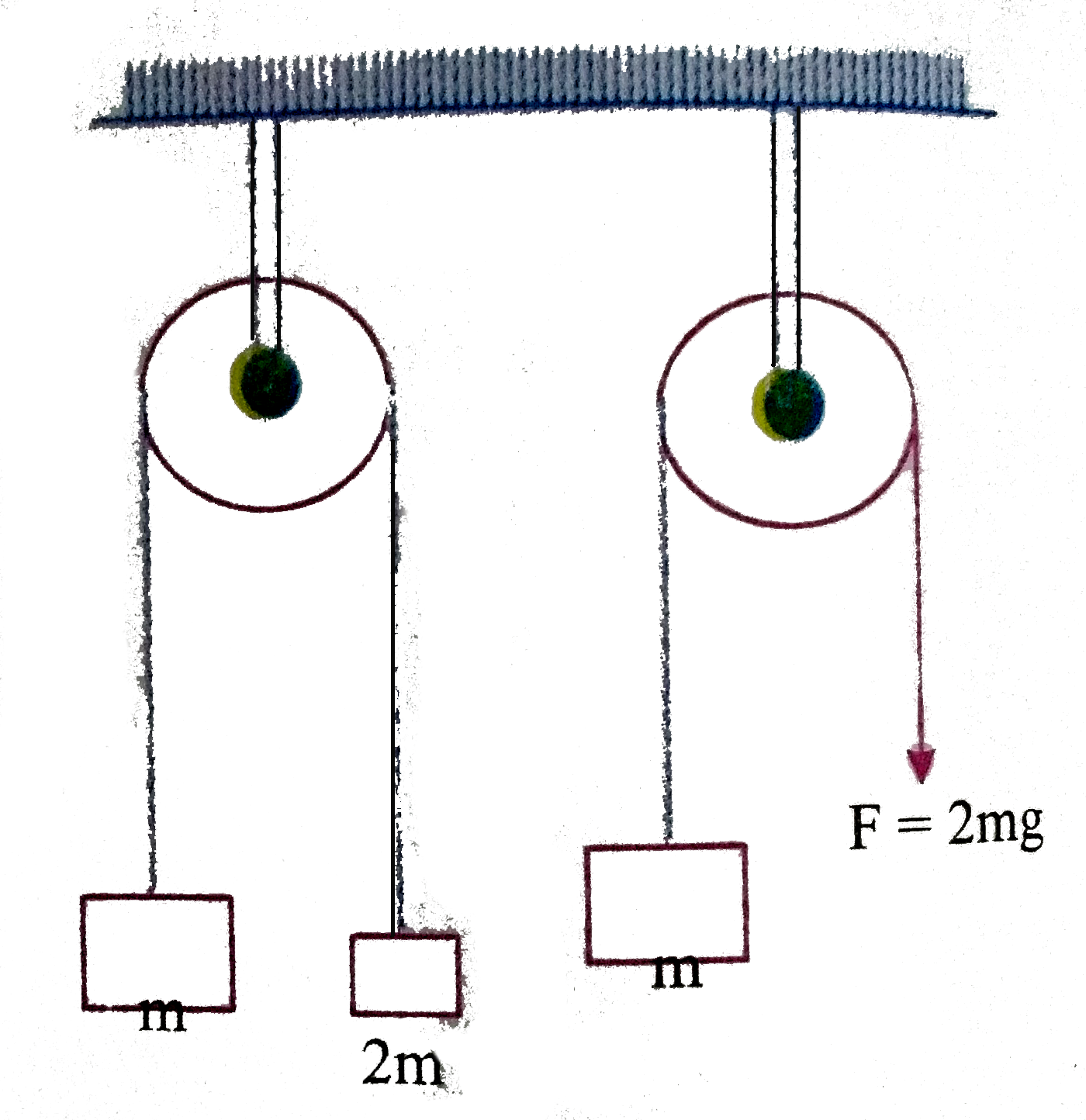 .
.
zero
more than that is case II
less than that in case
equal to that in case II
The correct Answer is:C
F=ma,a=g(m1−m2m1+m2),F−T=0
and T=2mg also T−mg=ma1Finally a<a1 .
Topper's Solved these Questions
- BOOK - NARAYNACHAPTER - NEWTONS LAWS OF MOTIONEXERCISE - LEVEL -III31videos
NEWTONS LAWS OF MOTION
- BOOK - NARAYNACHAPTER - NEWTONS LAWS OF MOTIONEXERCISE - NCERT BASED QUESTION33videos
NEWTONS LAWS OF MOTION
- BOOK - NARAYNACHAPTER - NEWTONS LAWS OF MOTIONEXERCISE - LEVEL -I (C.W)47videos
NEWTONS LAWS OF MOTION
- BOOK - NARAYNACHAPTER - MOTION IN A STRAIGHT LINEEXERCISE - Level 2 H.W29videos
MOTION IN A STRAIGHT LINE
- BOOK - NARAYNACHAPTER - OSCILLATIONSEXERCISE - EXERCISE - IV41videos
OSCILLATIONS
Similar Questions
The pulley arrangement of fig. are identical. The mass of the rope is negligible. In (a) mass m is lifted up by attaching a mass (2 m) to the other end of the rope. In (b), m is lifted up by pulling the other end of the rope with a constant downward force F =2 mg. In which case, the acceleration of m is more ?
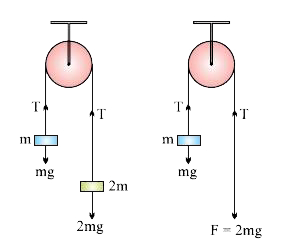 View Solution
View SolutionThe pulley arrangements of Figs. (a) and (b) are identical. The mass of the rope is negligible. In (a) the mass m is lifted up by attaching a mass 2m to the other end of the rope. In (b), m is lifted up by pulling the other end of the rope with a constant downward force F=2mg. The acceleration of m is the same in both cases
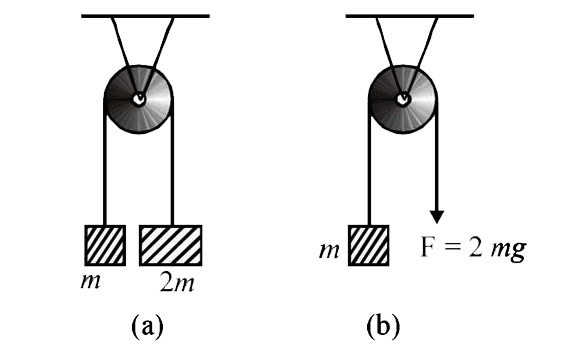 View Solution
View Solution
Knowledge Check
- Question 1 - Select One
Figure shown two pulley arrangements for lifting a mass m . In case-1, the mass is lifting by attaching a mass 2m while in case-2 the mass is lifted by pulling the other end with a downward force F=2mg . If aa and ab are the accelerations of the two masses then (Assume string is massless and pulley is ideal).
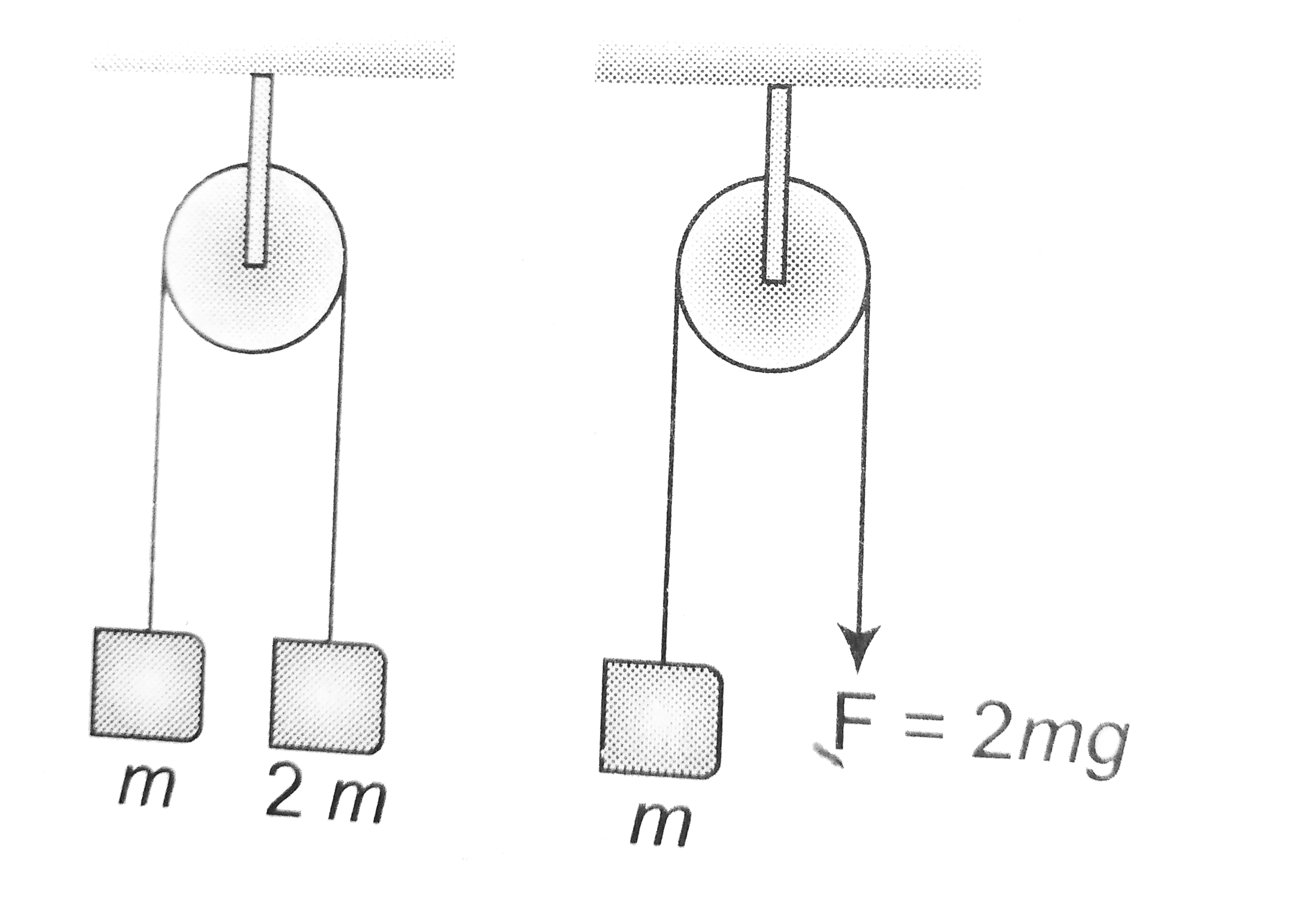 Aaa=abBaa=ab2Caa=ab3Daa=2ab
Aaa=abBaa=ab2Caa=ab3Daa=2ab - Question 2 - Select One
In fig mass m is lifted up by attaching a mass 2m to the other end of the string while in fig
(b) m is lifted by pulling the other end of the string with a constant force F=2mg then:
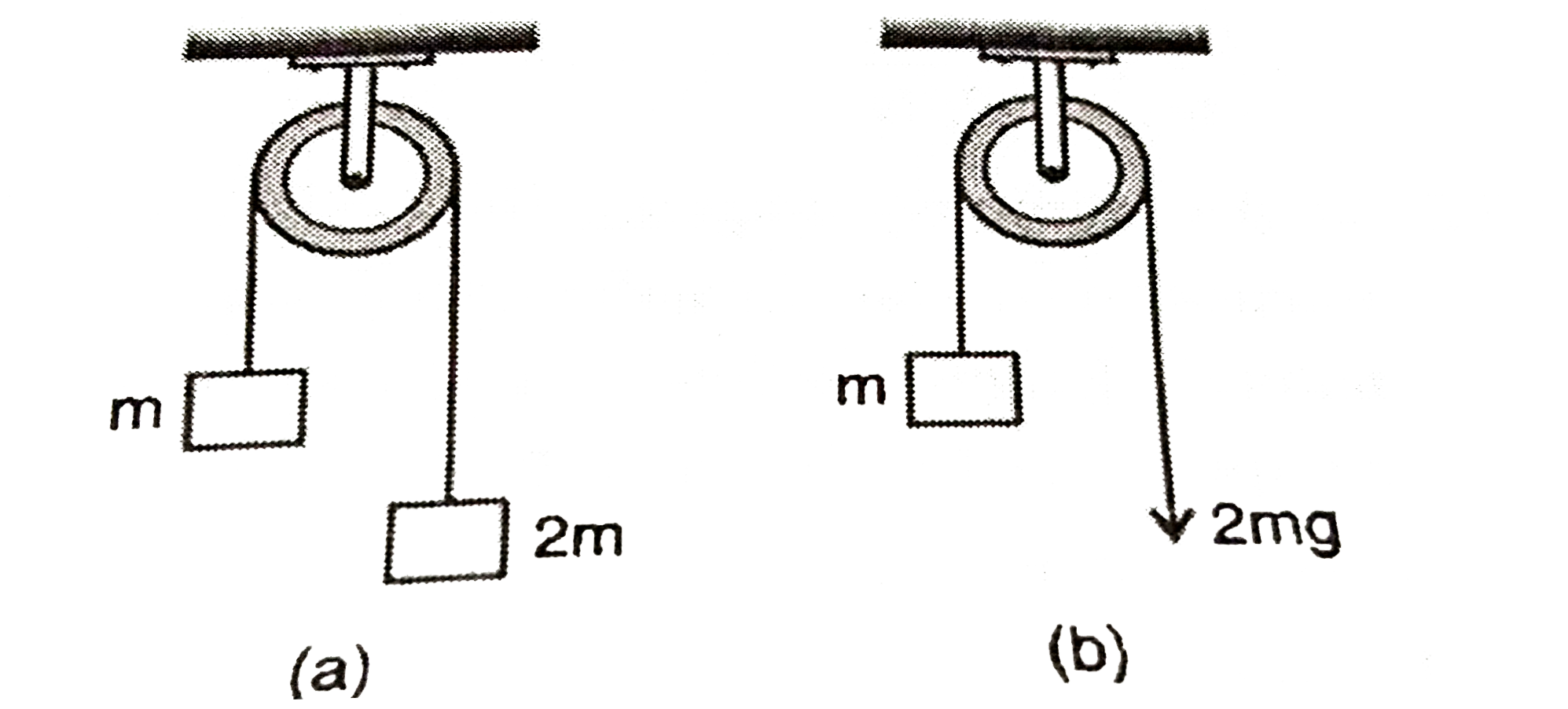 Aacceleration of m in the two situations is same and non - zeroBacceleration of m in situation
Aacceleration of m in the two situations is same and non - zeroBacceleration of m in situation
(a) is more than that of in situation(b)Cacceleration of m in situation
(a) is less than that of in situation
(b)Dacceleration of m in the two situations is same and equals to zero - Question 3 - Select One
In the shown mass pulley system, pulleys and string are massless. The one end of the string is pulled by the force F = mg. The acceleration of the block will be :
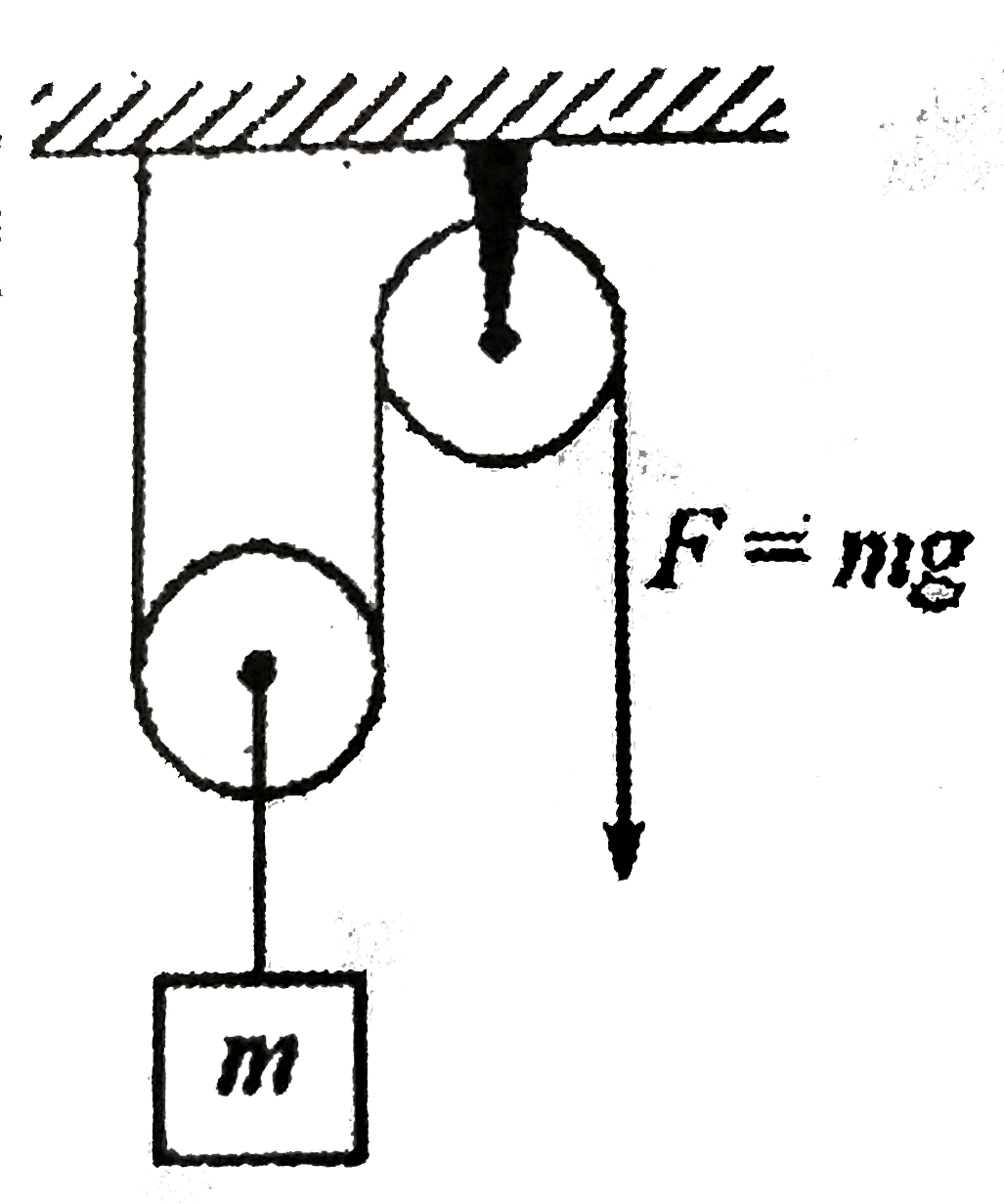 Ag/2B0CgD3g
Ag/2B0CgD3g
The pulley arrangements of fig (a) and (b) are identical. The mass of the rope is negligible. In (a) the mass m is lifted up by attaching a mass 2 m to the other end of the rope. In (b) m is lifted up by pulling the other end of the rope with a constant downward force F = 2 mg. Which of the following is correct?
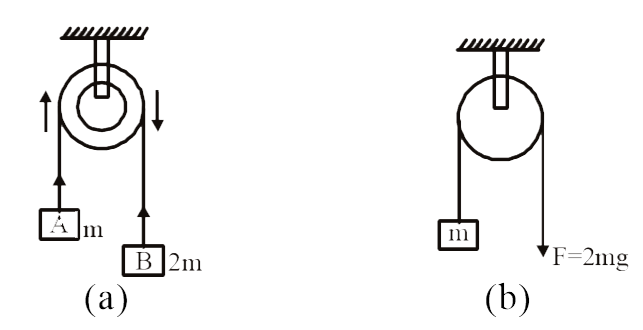 View Solution
View SolutionThe pulley arrangement in Fig are identical .The mass of the rope is negligble in figure the mass m is lifted up by atteched a mass 2m to the other end of the rope . In (b), m is lifed up by pulley the other end of the rope with a constant in both cases
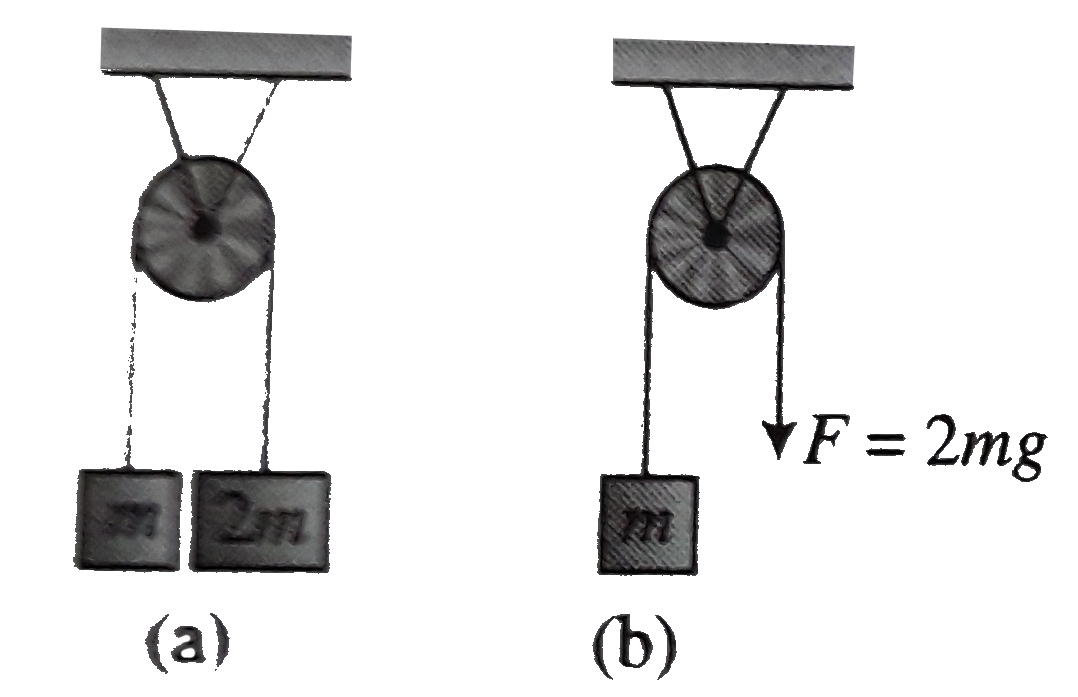 View Solution
View SolutionTwo point masses, each of mass 'm' are connected to the end of spring. If force F is applied on one of the mass, then find the acceleration of this mass if the acceleration of other mass is a ?
 View Solution
View SolutionTwo masses m and m' are tied with a thread passing over a pulley, m' is on a frictionless horizontal surface and m is hanging freely. If acceleration due to gravity is g, the acceleration of m' in this arrangment will be :
View SolutionIn the fig. given masses m and m' are tied with a tread passing over a pulley, m' is on a frictionless horizontal surface. If acceleration due to gravity is g, the acceleration of m' in this arrangement will be:-
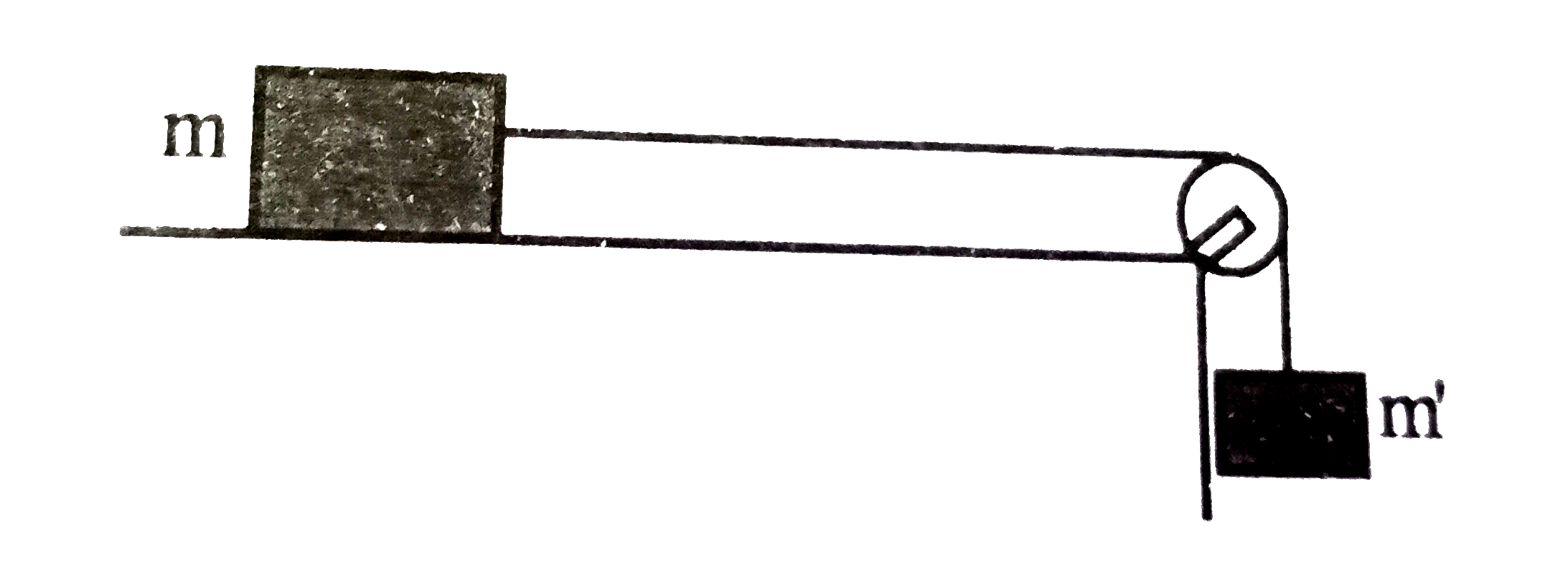 View Solution
View Solution

